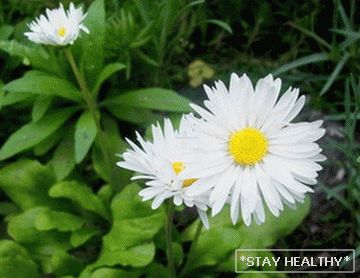 Mon, Mar 07, 2016
Mon, Mar 07, 2016
Род Маргаритки (Bellis) семейства Сложноцветные
includes 80 species of perennial herbaceous plants occurring
come from Eurasia and North America, of which the most
perennial daisy (Bellis perennis),
grown as a biennial plant. She starts to bloom early
in the spring, and stops flowering only in the fall. Dividing daisies by
groups and varieties is determined by the diameter, terry of inflorescences and
corolla form reed edge flowers.
Gardeners often prefer terry varieties,
having white, pink, red, carmine and other shades
red flowers Although, for example, round-leaved daisy flowers
(B. rotundifolia) have a white color with a blue tint.
Today, daisies can be found in every garden. They are decorated
lawns, flower beds, terraces, etc .; due to low growth and
Abundant bloom they are actively used in the spring and early summer
registration of flower beds, borders, rabatok; inflorescences of daisies are very
Look beautiful in miniature bouquets.
Contents
Daisies – growing and care
Daisies grow best in open sunny places, but
Partial shading is also well tolerated, especially in summer heat.
They are also distinguished by high winter hardiness.
Soils for them should be loamy, loose, with large
the amount of humus, but not fat, with moderate content
organics.
In dry and hot weather, daisies need watering, while
otherwise, their inflorescences will start to shrink, lose their terry and
stop flowering. They also need watering in windy weather.
Daisies are very responsive to making organic and
mineral fertilizers. They should be fed in May when they
begin to bloom, by making liquid fertilizer, for
cooking which 2 tablespoons nitrofoski and 2 tablespoons
spoon “Agricola-Fantasia” diluted in 10 liters of water and poured under
each bush plants 1 liter of solution.
Since these plants preserve leaves and buds in winter, their
must be covered with dry leaves.
Daisies that land on heavy land in the spring
may suffer from bulging. So they call the process when they
rise on the roots above the ground. To avoid this, before
sowing or planting the soil should be fertilized with humus and good
compost and make coarse sand. Cause of bulging
bushes can also be a sharp change in temperature, which at night
drops to minus, and rises above zero during the day. Special
such temperature drops are dangerous in the absence of snow
cover. To avoid such a phenomenon, one should produce
mulching landings, using peat, humus, sawdust and
other materials whose layer should be about 8 cm.
If in the spring it will be obvious that the bulging did take place, then
should transplant plants to a new place.
Маргаритки – пересадка и breeding
Daisies are propagated with seeds, cuttings and division
bush.
Seeding is usually done at the end of June. Emergence shoots
should be expected in 10-12 days. After another 2 weeks should
pick the seedlings and water them with the addition of a full
mineral fertilizer (on a bucket from 20 gr. to 30 gr.), and in August
– land the seedlings in open ground so that the distance
between plants ranged from 15 to 20 cm. Here they can already
winter, to bloom by the spring of next year. Annually
Daisies give abundant self-seeding. However, in order to keep
the most beautiful terry varieties, plants multiply by division
bushes. They are dug in August of the second year and produce division.
on separate sockets with roots. One plant can produce
up to 10 new bushes. Daisy can be successfully transplanted into
flowering condition.
Daisies – Diseases and Pests
Daisies are very resistant to disease and exposure.
pests. However, they may be affected by daisy’s septoria or
cercosporosis, which can be identified by spots on the leaves. Also
root rot in plants due to exposure
texas root rot. To combat all these diseases
appropriate fungicides are used.
In addition to fungal diseases, daisies can be exposed
exposed to scoop caterpillars and slugs. In this case, produce
metaldehyde preparation layout (10 sq. m. necessary
use 30 gr. drug).
And yet, compared with the delicate beauty of this flower, the efforts to
his growing are just scanty. Opportunities for
Using Daisies in Ornamental Gardening Truly
boundless. It can be used as a carpet plant.
on semi-shaded areas of large size with moderate humidity.
Such conditions allow until late autumn not only to keep
beautiful its bright inflorescences, but also fresh – leaves. Can
plant daisies in a group composed by
specific composition rules. Can создавать эффектные группы
daisies in combination with stunted conifers. Can
use them to frame decorative ponds along with
fern. In short, any of your fantasies can be
embodied with the help of this small but surprisingly resilient and
beautiful flower.





